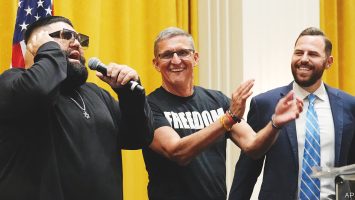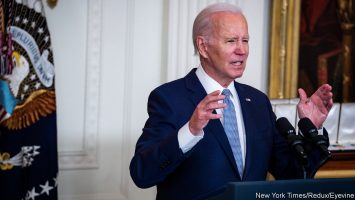FORTY-FIVE YEARS after allowing America’s universities to give limited consideration to race in admissions, the Supreme Court changed course on June 29th. Race-based affirmative action programmes in higher education, a 6-3 majority concluded, violate the Equal Protection Clause of the 14th Amendment.
The result in Students for Fair Admissions v Harvard (consolidated with Students for Fair Admissions v University of North Carolina) was no surprise. Affirmative action has been hanging by a thread for decades, with race-conscious admissions surviving by one-vote margins in Regents of University of California v Bakke in 1978, Grutter v Bollinger in 2003 and Fisher v University of Texas in 2016. When a six-justice conservative majority that was deeply sceptical of using racial criteria took shape in 2020, the demise of affirmative action seemed all but inevitable.
But the 237 pages of opinions—in which every justice but Samuel Alito, Amy Coney Barrett and Elena Kagan penned their own writings—show that deep divisions persist over how to reckon with America’s legacy of racial discrimination, and what kinds of ameliorative measures the law should allow.
In his majority opinion, Chief Justice John Roberts surveyed the history of affirmative-action jurisprudence and reprised a statement he wrote in 2007, just two years into his tenure. “The way to stop racial discrimination”, he wrote in Parents Involved in Community Schools v Seattle, “is to stop discriminating on the basis of race.” Sixteen years later, the chief offered an even pithier line: “Eliminating racial discrimination means eliminating all of it.” The Equal Protection Clause, he continued, quoting an 1886 decision, “applies ‘without regard to any differences of race, of colour or of nationality’—it is ‘universal in [its] application’.”
For decades, the basis of the Supreme Court’s justification for blessing affirmative action was “the educational benefits that flow from a diverse student body”. Although admissions officers were barred from using racial quotas to diversify their classrooms, they could use race as a “plus factor”—one consideration among many that could give black or Hispanic applicants an advantage over similarly qualified students who were not members of disadvantaged minorities. Chief Justice Roberts assailed this compromise. The benefits Harvard and the University of North Carolina claim for their admissions tips—“training future leaders in the public and private sectors”, “promoting the robust exchange of ideas”, “preparing graduates to ‘adapt to an increasingly pluralistic society’”—are neither concrete or measurable, he found. “Even if these goals could somehow be measured”, Chief Justice Roberts asked, “how is a court to know when they have been reached, and when the perilous remedy of racial preferences may cease?”
The majority’s critique goes deeper. The ruling questions the very notion of diversity that universities claim to embrace and finds that the racial “categories are themselves imprecise in many ways”. To group together “all Asian students” is to show a lack of interest in “whether South Asian or East Asian students are adequately represented”. And while the universities claim to care about correcting for underrepresentation, Chief Justice Roberts wrote, they “would apparently prefer a class with 15% of students from Mexico over a class with 10% of students from several Latin American countries, simply because the former contains more Hispanic students than the latter”. Chief Justice Roberts concluded with a heavy charge: universities have “for too long” seen “the touchstone of an individual’s identity” not as “challenges bested, skills built, or lessons learned but the colour of their skin”.
Unsparing dissents from Justices Sonia Sotomayor and Ketanji Brown Jackson (who both joined the other’s writing, and who are each joined by Justice Elena Kagan) accuse the majority of abandoning a tool that has helped bring more inclusivity and equality to higher education and to American society more broadly. The decision, Justice Sotomayor wrote, will have a “devastating impact” in “an endemically segregated society where race has always mattered and continues to matter”. In a sparring match with Justice Clarence Thomas, who wrote a 58-page concurrence, Justice Jackson insisted that race-conscious admissions policies are in keeping with the original understanding of the 14th Amendment and remain crucial tools today. Justice Thomas’s colourblind reading of that amendment, she wrote, “refuse[s] to see, much less solve for, the elephant in the room—the race-linked disparities that continue to impede achievement of our great nation’s full potential”.
Despite its thorough rejection of systematic considerations of race, Chief Justice Roberts’s majority opinion left two windows open a crack. First, it acknowledged that individualised considerations of the impact of applicants’ racial identity are permissible: “nothing in this opinion should be construed as prohibiting universities from considering an applicant’s discussion of how race affected his or her life, be it through discrimination, inspiration or otherwise”. Second, in a footnote with outsize implications, the opinion exempted military schools like West Point and the Naval Academy from the ban on race-conscious admissions. The chief justice floated this exemption in last autumn’s oral argument. It seems to be in deference to the solicitor-general’s claim that in the context of military training, racial diversity is a matter of national security.
For Justice Jackson, the military academy carve-out is a craven move based on the notion that “racial diversity in higher education is only worth potentially preserving insofar as it might be needed to prepare Black Americans and other underrepresented minorities for success in the bunker, not the boardroom”. Justice Sotomayor called the first caveat “lipstick on a pig” inserted merely “to save face”. But in her closing, Justice Sotomayor seemed to welcome the narrow opening. “Although the court has stripped out almost all uses of race in college admissions”, she wrote, “universities can and should continue to use all available tools to meet society’s needs for diversity in education.” ■



